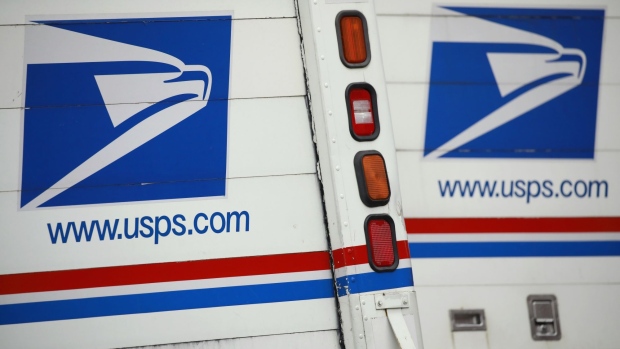Feb 25, 2022
Why the U.S. Postal Service Ended Up With Gas-Guzzling Trucks
, Bloomberg News

(Bloomberg) -- Stay on top of the electric car revolution by signing up to our Hyperdrive newsletter here.
The world is going wild for electric vehicles, but not the United States Postal Service. The agency said earlier this week it is moving forward with a plan to replace its current mail trucks with a new fleet powered almost entirely by internal combustion engines. The $6 billion contract with defense contractor Oshkosh calls for up to 165,000 mail trucks to be delivered over the next 10 years. The vehicles get between 8.6 and 14.7 miles per gallon.
The decision has been met with frustration by many, including the Environmental Protection Agency, which has repeatedly spoken out about the effects a gasoline-based fleet could have on the environment. But however obvious the EPA and President Joe Biden’s administration believe the detrimental effects of such trucks are, the outcome of any debate over what to purchase was pretty much guaranteed to be the outcome we now have.
The Postal Service’s process to consider such a large purchase began in 2015, at a time when EVs were still considered a niche curiosity. There was no argument that the mail trucks in use then, made by Grumman and known as Long Life Vehicles, were in desperate need of replacement. That need is so much greater today due to many risks most Americans are unaware of. Too many of the LLVs still on the road today have no airbags, no air conditioning, and are increasingly prone to catching fire. They have nothing resembling modern driver safety features.
When the agency opened the competition for bids seven years ago, few people were talking about battery-powered cars or trucks on any kind of mass scale. We were still more than a full year away from Tesla’s reveal of the Model 3 sedan. General Motors had only just showed off a concept version of the Chevrolet Bolt at the Consumer Electronics Show. Rivian was deep in stealth mode. Electric vehicles were glorified go-karts in the minds of most Americans.
The Postal Service emphasized its desire for an “alternative fuel vehicle” in early proposals and some of the original competitors obliged. Turkish truck builder Karsan tested hybrid trucks in partnership with Michigan van builder Morgan Olson and so did Indian automaker Mahindra. Others, like Humvee-maker AM General and Oshkosh, remained focused on gas engines but promised fuel efficiency improvements. Only one team pitched a true battery-powered solution but even that wasn’t all-electric: Truck body manufacturer VT Hackney was working with a startup called Workhorse to prototype a mostly electric mail truck equipped with a small range-extending gasoline engine.
By the time the USPS asked for final proposals in late 2019, AM General had dropped out. Mahindra soon after followed suit. VT Hackney gave up. Workhorse — which was surviving on a diet of hedge fund loans and spinouts, including Lordstown Motors — bought out its partner and continued forward as the only electric-first option. In the final proposal round, Oshkosh radically reworked its bid and submitted a different design from the one it had spent years testing — one that could theoretically work with either a gas or battery-powered drivetrain.
The auto industry underwent dramatic shifts in the six years the USPS spent looking for a replacement. Tesla shipped the Model 3 and the Model Y, Ford launched the Mustang Mach-E, and Volkswagen Group and its brands started selling a slew of EVs. But the thing about a government procurement process is that once it gets rolling, it moves slowly and is complicated by a lot of bureaucracy.
Oshkosh was awarded the contract in February 2021, just weeks after President Biden took office and promised to electrify the entire government fleet. Workhorse challenged the award in federal court, which is where many of the details about Oshkosh’s last-minute switch emerged; it ultimately dropped the case.
The USPS has spent the past year fending off accusations — from the public, lawmakers and Workhorse — that it improperly awarded the contract, broke its own procurement rules, and didn’t try hard enough to find a truly green option. Thanks to the secretive nature of the competition, which required the bidders to sign non-disclosure agreements, there’s an awful lot we don’t know about the process.
The Postal Service’s decision to wait until the Grumman LLVs started falling apart before it considered replacing them is a factor that tends to get overlooked. If the agency had acted earlier, it might be in a better position to start a new bidding process now, when an array of companies are ready to compete to build an environmentally friendly fleet.
Instead the agency is promising just 10% of the new fleet will be electric. It’s also downplaying the theoretical option of converting the new gas-powered trucks at a later date. Let’s face it, Oshkosh has little to no experience building electric vehicles — that’s a risk.
This week’s news has prompted an outcry to change the decision. But new trucks are needed, yesterday. Any delay could put more postal workers at risk.
©2022 Bloomberg L.P.





